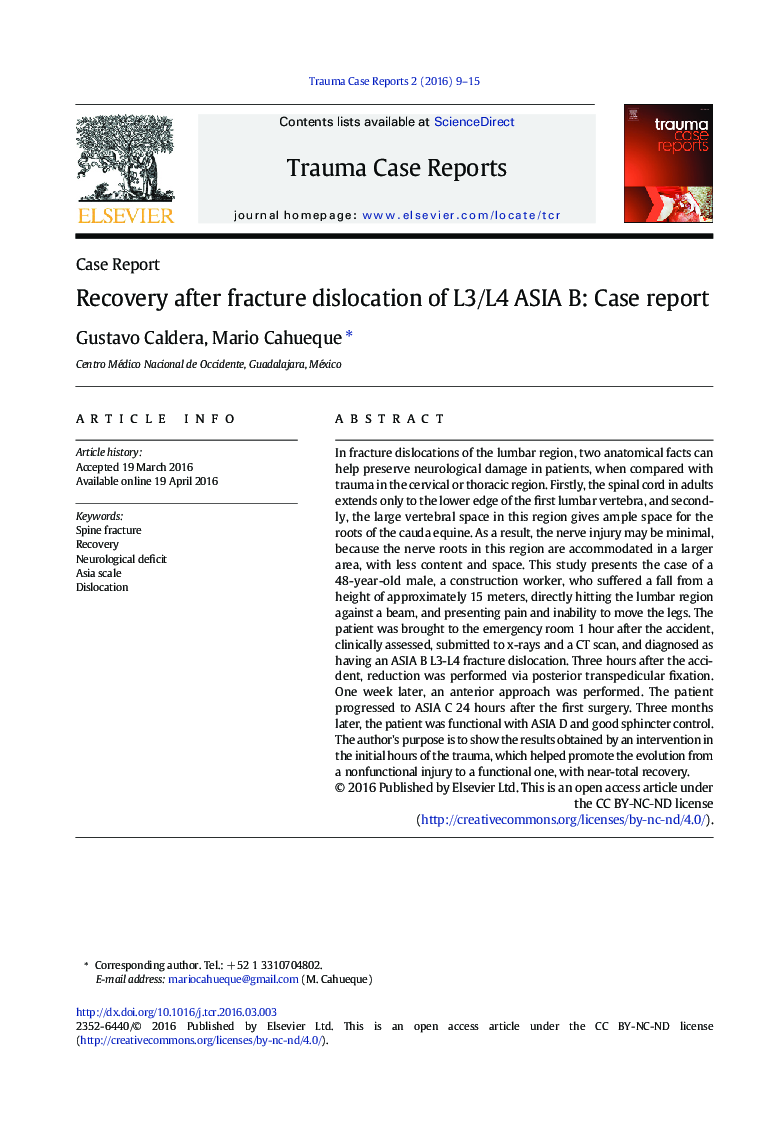| Article ID | Journal | Published Year | Pages | File Type |
|---|---|---|---|---|
| 4100549 | Trauma Case Reports | 2016 | 7 Pages |
In fracture dislocations of the lumbar region, two anatomical facts can help preserve neurological damage in patients, when compared with trauma in the cervical or thoracic region. Firstly, the spinal cord in adults extends only to the lower edge of the first lumbar vertebra, and secondly, the large vertebral space in this region gives ample space for the roots of the cauda equine. As a result, the nerve injury may be minimal, because the nerve roots in this region are accommodated in a larger area, with less content and space. This study presents the case of a 48-year-old male, a construction worker, who suffered a fall from a height of approximately 15 meters, directly hitting the lumbar region against a beam, and presenting pain and inability to move the legs. The patient was brought to the emergency room 1 hour after the accident, clinically assessed, submitted to x-rays and a CT scan, and diagnosed as having an ASIA B L3-L4 fracture dislocation. Three hours after the accident, reduction was performed via posterior transpedicular fixation. One week later, an anterior approach was performed. The patient progressed to ASIA C 24 hours after the first surgery. Three months later, the patient was functional with ASIA D and good sphincter control. The author's purpose is to show the results obtained by an intervention in the initial hours of the trauma, which helped promote the evolution from a nonfunctional injury to a functional one, with near-total recovery.
